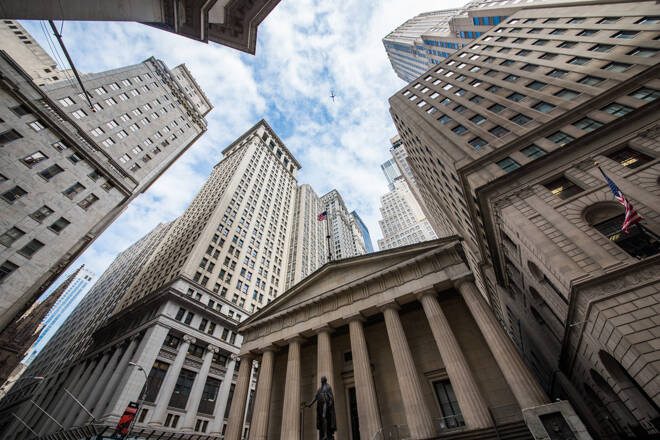Advertisement
Advertisement
United Airlines Shares Slump on Deep Quarterly Loss; Analysts Optimistic on Recovery
By:
United Airlines reported a worse-than-expected loss in the first quarter as the COVID-19 pandemic continues to hammer air travel demand amid higher fuel costs, sending its shares down over 2% in extended trading on Monday.
United Airlines reported a worse-than-expected loss in the first quarter as the COVID-19 pandemic continues to hammer air travel demand amid higher fuel costs, sending its shares down over 2% in extended trading on Monday.
Chicago, Illinois-based airline reported a first-quarter 2021 net loss of $1.4 billion, adjusted net loss of $2.4 billion, missing Wall Street consensus estimates for the loss of $2.23 billion. The company’s total operating revenue plunged 66% y/y to $3.2 billion. United lost $7.50 a share during the first quarter, worse than analysts’ expectations for a loss of $6.98 per share.
United Airlines forecasts total revenue per available seat mile (TRASM) to be down about 20% in the second quarter 2021 versus the second quarter 2019. Expects the second quarter 2021 capacity to be down around 45% versus the second quarter 2019 and operating expenses excluding special charges4 to be down nearly 32%.
Fuel price per gallon estimated to be approximately $1.83 in the second quarter.
“We’ve shifted our focus to the next milestone on the horizon and now see a clear path to profitability. We’re encouraged by the strong evidence of pent-up demand for air travel and our continued ability to nimbly match it, which is why we’re as confident as ever that we’ll hit our goal to exceed 2019 adjusted EBITDA margins in 2023, if not sooner,” said United Airlines CEO Scott Kirby.
United Airlines shares slumped over 2% to $53.80 in extended trading on Monday. The stock plunged over 50% last year.
Analyst Comments
“Higher than anticipated payroll and maintenance costs resulted in a below expectation1Q21 EPS result. Yield and load factor are outpacing our expectations slightly while the company is being conservative with capacity. Management believes United can reach EBITDA and net income b/e with business/international long-haul demand down as much as 70% y/y2 and 35% y/y2, respectively,” noted Helane Becker, equity analyst at Cowen and Company.
“United shares are flat to down in the after-hours trading session on mixed results as slightly higher than expected revenue, compared to our estimate, was more than offset by larger payroll and maintenance costs. The company is deploying incremental capacity to markets where it sees pent-up demand and anticipates positive EBITDA margins later this year. Management’s commentary calls for positive EBITDA and net income with business/long-haul international demand down as much as 70% and 35%, respectively, vs 2019 levels. While the comments were likely made to show where breakeven can occur during the recovery, investors may be interpreting them as an expectation that it will take longer than anticipated for business and international travel to recover fully.”
United Airlines Stock Price Forecast
Fourteen analysts who offered stock ratings for United Airlines in the last three months forecast the average price in 12 months of $63.83 with a high forecast of $74.00 and a low forecast of $54.00.
The average price target represents a 16.08% increase from the last price of $54.99. Of those 14 analysts, seven rated “Buy”, six rated “Hold” while one rated “Sell”, according to Tipranks.
Morgan Stanley gave the base target price of $65 with a high of $96 under a bull scenario and $30 under the worst-case scenario. The firm gave an “Equal-weight” rating on the airline’s stock.
“Why Equal-weight? We like UAL’s confidence in providing a 2023 cost guide which includes a goal to permanently reduce $2 bn of cost and at least match 2019 margins. The market is also very keen to see UAL’s go-to-market strategy on the revenue side as travelers return. However, the legacy network footprint is a slightly bigger overhang than its network peers and the cap structure will likely take years to normalize, which could remain overhangs on the stock,” noted Ravi Shanker, equity analyst at Morgan Stanley.
Several other analysts have also updated their stock outlook. Cowen and company raised the stock price forecast to $65 from $53. Raymond James upped the target price to $80 from $60. JP Morgan lifted the price target to $58 from $43. Citigroup increased the price objective to $67 from $54. Jefferies raised the target price to $60 from $55.
Check out FX Empire’s earnings calendar
About the Author
Vivek Kumarauthor
Vivek has over five years of experience in working for the financial market as a strategist and economist.
Advertisement
